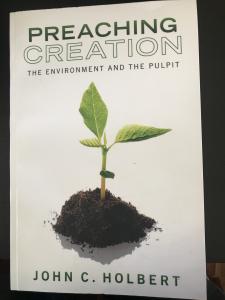(Lectionary text for Holy Cross, Sept 14, 2016 or Sunday Sept 18, 2016)
 Oh, dear, it is snake time again in the lectionary! And like Indiana Jones, peering into that deep Egyptian pit, we cry, “Snakes! Why does it always have to be snakes?” Of course, the answer to that question for us Bible readers is all too obvious: John 3:13-17. The author of John’s gospel had a look at the snake passage in Numbers and found there, through an imaginatively allegorical lens, a reference to the “lifting up” of Jesus on the cross, mirroring Moses’ lifting up of the serpent in the wilderness. John’s allegory follows the famous story of Nicodemus, the seeking Jewish leader, who could not understand what it meant to be “born from above,” and precedes the most famous line in the gospel, “For God so loved the cosmos…” In the same way that the bronze serpent in the wilderness becomes a source of healing for the snake-bitten Israelites, so Jesus, raised high on his own “pole” in the wilderness, will become the source of healing for the whole cosmos, according to John’s construal of Jesus’ divine work. Within the world of John’s unique theology, all that makes sense.
Oh, dear, it is snake time again in the lectionary! And like Indiana Jones, peering into that deep Egyptian pit, we cry, “Snakes! Why does it always have to be snakes?” Of course, the answer to that question for us Bible readers is all too obvious: John 3:13-17. The author of John’s gospel had a look at the snake passage in Numbers and found there, through an imaginatively allegorical lens, a reference to the “lifting up” of Jesus on the cross, mirroring Moses’ lifting up of the serpent in the wilderness. John’s allegory follows the famous story of Nicodemus, the seeking Jewish leader, who could not understand what it meant to be “born from above,” and precedes the most famous line in the gospel, “For God so loved the cosmos…” In the same way that the bronze serpent in the wilderness becomes a source of healing for the snake-bitten Israelites, so Jesus, raised high on his own “pole” in the wilderness, will become the source of healing for the whole cosmos, according to John’s construal of Jesus’ divine work. Within the world of John’s unique theology, all that makes sense.
But what are we moderns to do with all those snakes? We no longer believe in some sort of sympathetic magic wherein a long look at a snake pole will cure us of the poison of snake bites, the upshot o f this weird little story in Numbers. Yes, I know that snake venom is often the basis for snakebite antidotes, and it is possible that the ancients had dis
f this weird little story in Numbers. Yes, I know that snake venom is often the basis for snakebite antidotes, and it is possible that the ancients had dis covered a piece of that truth long ago. However, I find no trace in this story of that reality. What I see here is pure sympathetic magic: “Whenever a serpent bit someone, that person would look at the bronze serpent and live” (Num 21:9). Magic, pure and simple.
covered a piece of that truth long ago. However, I find no trace in this story of that reality. What I see here is pure sympathetic magic: “Whenever a serpent bit someone, that person would look at the bronze serpent and live” (Num 21:9). Magic, pure and simple.
So, what are we to do with the passage, we modern preachers? Bad enough that we are sometimes asked to pray for rain in a drought, imploring a God who has for reasons unannounced withheld the rain from us (too much sex? too much gambling? too many bad politicians?), treating God rather more like Baal than the God we supposedly revere! Must we now enter hospital rooms clutching bronze poles, upon which are affixed snakes or legs or eyes, depending on the diseases or afflictions of our people? Well, you can still readily purchase tiny limbs (milagros) outside many houses of worship throughout Latin America, but I have not seen such kiosks around US hospitals recently, many McDonalds, but no magic kiosks.
Might we find some clues to possible functions for this story in a modern sermon by looking more closely at what it actually says? But even after a close look, we may need to conclude that it can serve us no purpose any longer, beyond an ancient curiosity, and force us to consign it to the dustbin of the Bible along with Elisha and the nasty she bears of 2 Kings 2:23-24. No sermons, please! But, not so fast; let’s give the text another look first.
“From Mount Hor, they left by way of the Sea of Reeds to go around the land of Edom. The people became impatient (or “discouraged”) on the way. They spoke against Elohim and Moses: ‘Why did you bring us out of Egypt to die in the wilderness? There is no food or water, and we are heartily sick of this disgusting food’” (Num 21:4-5)! These two verses are riddled with interesting material. For the geographically and historically inclined among you, it remains fascinating and puzzling that the author of Numbers here suggests that the route of the Israelites through the wilderness after their Egyptian escape included a journey “by way of the Sea of Reeds” (clearly not the modern Red Sea) in order to avoid the nation of Edom. The location of the Sea of Reeds has long been a thorough conundrum, but this story implies that it is close to a land called Edom. Such a land has no meaning archeologically until the 11th century BCE, so these Israelite wanderers have arrived at a place that did not exist when they supposedly wandered near there! And if the Egyptian story bears any factual history at all, it could hardly have occurred much later than the 13th century BCE. I trust you see the chronological problem.
And in verse 5, the Israelite travellers “become impatient” or (perhaps) “discouraged” on the way, and begin to complain against Elohim (not YHWH here) and against Moses by first claiming that there is “no food or drink” in this wilderness, but conclude by decrying the “disgusting food.” Well, which is it? No food or disgusting food? The portrait implies that they are less than willing to follow God and Moses and would rather be back in Egypt. In other places in the long story of their wanderings, they shout quite explicitly that Egyptian bondage with food is far better than so-called freedom in the wilderness without food or at least food they are willing to eat.
“Then YHWH sent fiery snakes among the people; they bit the people so that many Israelites died” (Num 21:6). The mythological elements in this verse are prominent. The usual translation of the adjectival description of the snakes is “poisonous,” and that would be reasonable given the accepted actions of dangerous serpents. However, the word used is “seraphim,” a class of mythological creatures described in other places as fiery, rather than poisonous. See, for example, the famous servants of YHWH in the temple observed by Isaiah the prophet in Is 6 who bring fiery coals to the prophet’s lips. It is obvious that YHWH is furious with this complaining mob, and sets out to show them who is boss by employing the seraphim, this time in the person of snakes. The word for snake here is nechushtan, very similar to the Hebrew word for “bronze,” a pun that will appear in full at the end of the story. Older critics of the tale point out the two different names for God and assign two tellers to the story. That may be originally true, but the story appears to us whole now.
The response of the people to the nasty snakes of YHWH is a profession of sin and the demand that Moses pray to YHWH to remove the foul creatures from them. Moses does so, and is told by YHWH to “make a fiery serpent and put it on a pole; everyone who is bitten shall look at it and live. So Moses made a serpent of bronze (a n’chosh n’choshet), and put it on a pole. Whenever a serpent bit someone, that person would look at the serpent of bronze and live” (Num 21:8-9). Get a snake bite, peek at the pole, and the bite’s venom is made innocuous or at least non-lethal.
So there it is, the story in full. The fact that John found Jesus there is testimony that his imagination was in overdrive. But I doubt you had to be convinced of that, if you have read John’s gospel at all. But back to the question: what are we preachers to do with this? I suppose we could psychologize a mite. You always have to face the things you fear the most. Whatever your own snakes may be, you have to look them square in the fangs to be cured of your fear of them. OK? Confront your fears! Do not run and hide from them! I do not find such a reading far-fetched, but I do find it little better than John’s allegorization. The author of the ancient story was neither psychologizing nor allegorizing. He was steeped in ancient magic, and was writing for folk who were knee-deep in magic, too.
How about something like John’s theology? Salvation does not come from easy triumphs or simple beliefs; to be made whole (the central meaning of salvation as the Bible has it) means to accept the pain and struggles of life, to face them with courage offered by God, and to receive the grace that makes healing possible. Note: I do not mean by this that all suffering is thereby acceptable and indicative of automatic health. Spousal abuse leads to nothing more than pain and degradation and should then lead to trial and prison for the abuser. But Jesus’s suffering, his acceptance of pain when he could have avoided it, suggests a kind of model for us: the offering of one’s life for others is a road that may lead to genuine wholeness and real hope for the world.
Of course, I am once again allegorizing, or at least cleverly riffing on the obviously magical story from the book of Numbers. We preachers do such jazzy riffs all the time when we preach, else some of the Bible’s materials, left to their own devices, would not preach at all. Remember Elisha and those bears.
Just what do you do with all this? How have you read the snake stories from Numbers and John? I would be interested to know. I admit I have not done much with either account in my own preaching. But ought I to have avoided them, especially since John found them so engaging two millennia ago? It just might be a Sunday to head for the Psalm or the epistle.











